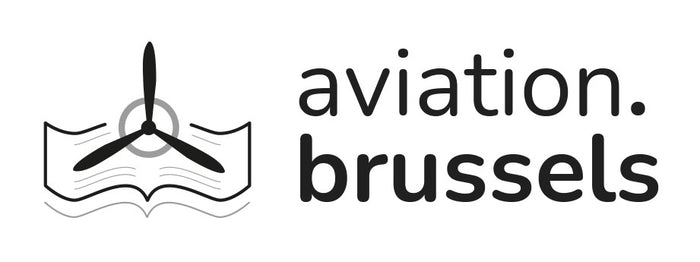Captain W.E. Johns
William Earl Johns ( February 5th, 1893 - June 21st, 1968 ) was born in Bengeo ( Hertford, England ). his early ambition was to be a soldier, and he was a crack shot with a rifle.
From January 1905, he attended Hertford Grammar School. He also attended evening classes at the local art school. William E. Johns was not a natural scholar. In the summer of 1907, he was apprenticed to a county municipal surveyor for four years, and in 1912, was appointed as a sanitary inspector in Swaffham ( Norfolk, England ). In 1913, while living in Swaffham, and working as a sanitary inspector, William E. Johns enlisted in the Territorial Army as a trooper in the King's Own Royal Regiment ( Norfolk Yeomanry ).
The regiment was mobilised in August 1914 and was sent overseas in September 1915, embarking on R.M.S. Olympic. The Norfolk Yeomanry fought ( as infantry ) at Gallipoli ( present - day Gelibolu, Turkey ) until December when they were withdrawn to Egypt. In September 1916, William E. Johns transferred to the Machine Gun Corps. While serving on the Macedonian front in Greece, he was hospitalised with malaria.
After recovering, he was commissioned into the Royal Flying Corps ( R.F.C. ) in September 1917 as a Temporary Second Lieutenant and posted back to Great Britain for flight training. William E. Johns undertook his initial flying training at the short - lived airfield at Coley Park ( Reading, Berkshire, England ), flying the Farman MF.11 Shorthorn aircraft. He was then posted to No. 25 Flying Training School at Thetford ( Norfolk ).
On April 1st, 1918*, he was appointed Flying Instructor at Marske - by - the - Sea ( Yorkshire, England ). During this time, his probationary commission was confirmed. William E. Johns continued to serve as a Flying Instructor until August 1918, when he transferred to No. 55 Squadron ( R.A.F. ), at the time part of the Independent Air Force ( I.A.F. ). A section of the R.A.F. that had been formed for the purpose of bombing targets deep inside Germany. William E. Johns' career flying strategic bombing missions was characteristically short, lasting only six weeks. On September 16th, 1918, he was piloting one of six DH.4s on their way to bomb Mannheim ( present - day Baden - Württemberg, Germany ) when his aircraft was hit by anti - aircraft fire and he was forced to drop out of formation. The bomber was attacked by a number of Fokker D.VII fighters. William E. Johns received a leg wound. His Observer and Rear Gunner, Second Lieutenant Alfred Edward Amey, was badly wounded and the aircraft shot down. Slightly injured in the crash, he and Alfred E. Amey were taken prisoner by German troops. The latter died of his injuries later that day. William E. Johns remained a prisoner of war until after the Armistice of November 11th, 1918.
After the war, William E. Johns remained in the Royal Air Force, apparently with the substantive rank of Pilot Officer. His promotion to the rank of Flying Officer was gazetted on November 23rd, 1920. Working in Central London as a Recruiting Officer, he rejected Thomas Edward Lawrence ( of Arabia, 1888 - 1935 ) as a R.A.F. recruit for obviously giving a false name, but was later ordered to accept him. By 1923, his R.A.F. commission had been extended a further four years and he had moved to Birmingham ( West Midlands, England ), again working as a Recruiting Officer. On October 15th, 1927, he was transferred to the Reserves. On October 15th, 1931, he relinquished his commission.
William E. Johns was a prolific author and editor. His first novel, Mossyface, was published in 1922 under the pen name " William Earle ". After leaving the R.A.F., he became a newspaper air correspondent, as well as editing and illustrating books about flying. At the request of John Hamilton Ltd, he created the magazine Popular Flying which first appeared in March 1932. It was in the pages of Popular Flying that " Biggles " first appeared.
From the early 1930s, William E. Johns called for the training of more pilots, for if there were not enough when war came :
" ... training would have to be rushed, and under - trained airmen would die in accidents or in combat against better trained German pilots. "
He was removed as editor at the beginning of 1939, probably as a direct result of a scathing editorial, strongly opposed to the policy of appeasement and highly critical of several Conservative statesmen of the time. His opposition to appeasement is reflected in some of his books : The Black Peril ( 1935 ) and " Biggles " Air Commodore ( 1937 ).
Apart from " Biggles ", his other multi - volume fiction series were :
- The 6 - volume Steeley series ( 1936 - 1939 ).
- The 11 - volume Worrals series ( 1941 - 1950 ).
- The 10 - volume Gimlet series ( 1943 - 1954 ).
- A 10 - volume science fiction series ( 1954 - 1963 ).
William E. Johns also wrote eight other books of juvenile fiction, twelve books of fiction for adults, and eight factual books, including several books on aviation, books on pirates and treasure hunting, and a book on gardening : The Passing Show.
He died at the age of 75, shortly after he wrote the final " Biggles " story : " Biggles " does some Homework.
* Official founding of the Royal Air Force ( R.A.F. ).
( source : Wikipedia )



















